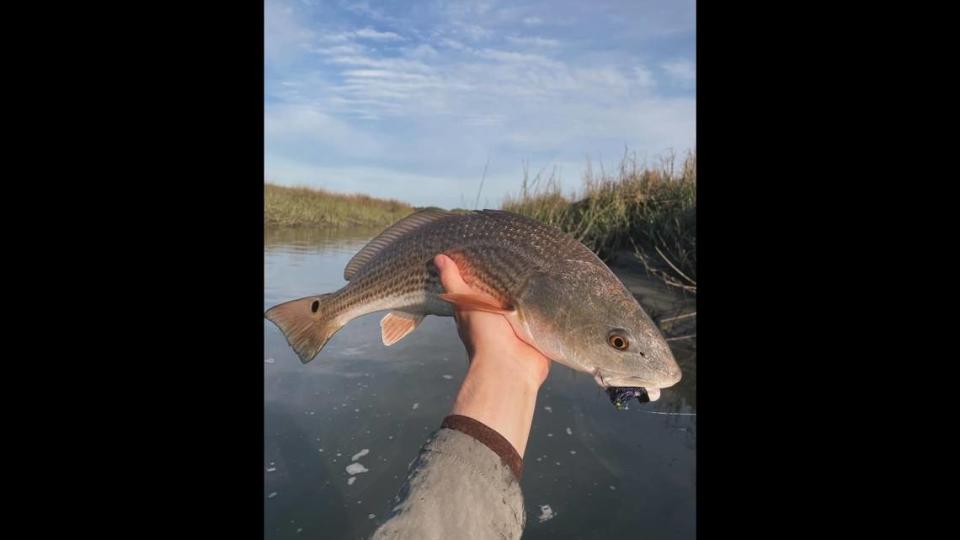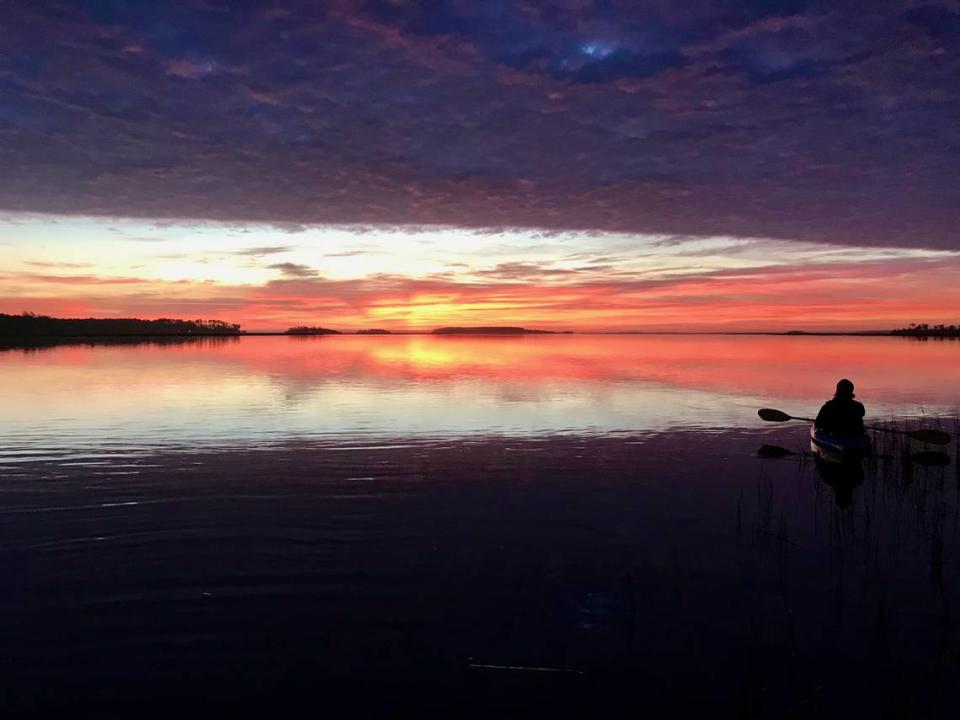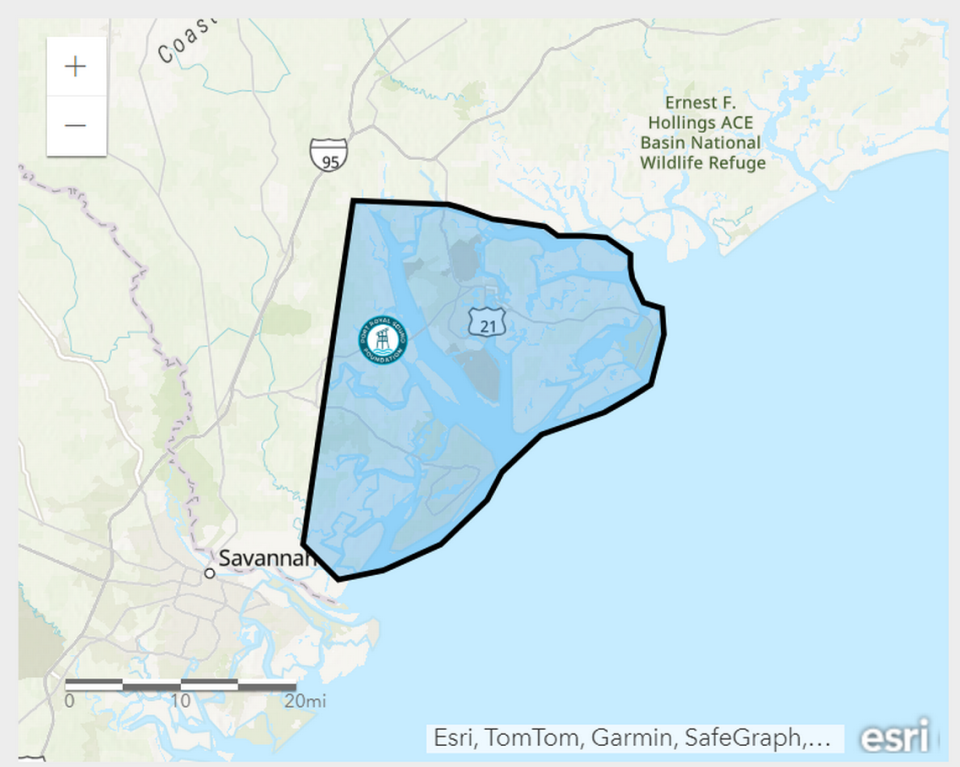Anglers to count fish for science in Port Royal Sound contest. What’s the prize money?
Recreation fishing and serious science are rarely on display in one activity but in late September, as anglers hook redfish, southern flounder, spotted sea trout, cobia, tarpons and sharks during a one-of-a-kind fishing tournament, they will be also helping sustain the local ecosystem.
South Carolina’s Port Royal Sound is unique among coastal estuaries in the southeastern United States, encompassing an area of water, land and marsh bigger than Rhode Island, says Chris Kehrer, the science program manager of the Port Royal Sound Foundation.
The foundation has come up with a new way to assist in the collection of vital data as part of its work to protect it and it’s called the Port Royal Sound Inshore Slam. But catching the biggest fish won’t be the only aim of the first-of-a-kind fishing tournament for the area.
In this case, tournament participants will where two hats: angler and citizen scientist. When the tournament opens at 6 a.m. Sept. 27, hundreds of anglers will be unleashed along the shores and into the crooks and crannies and open waters of the 1,600 square-mile Sound in August and September. Besides having fun and competing for $10,000 in cash prizes, their job over the 10-day tournament will be recording any fish they catch for the sake of research. That information will then be turned over to the South Carolina Department of Natural Resources.

What makes the sound unique?
Port Royal Sound is the deepest natural harbor on the East Coast south of Chesapeake Bay. With waters reaching 60 feet deep in places, it features high-salinity ocean rivers such as the Broad and May that extend up to 30 miles inland.
As a result of the salty tidal inlets, it is not uncommon to see such ocean species such as cobia, tarpons and sharks deep in the interior in places where they would not otherwise be found, Kehrer says. Both tarpon and a 5-foot blacktip shark have recently been spotted off the dock at the foundation’s Okatie Highway Maritime Center.
“It’s a really unique ecology that exists here,” Kehrer says.
But more information is needed on the diversity and density of the smorgasbord of species that thrive in this lifeblood flowing through Lowcountry rivers, says Kehrer. Fisheries managers can only do so much, he added.
Jody Hayward, executive director of the Port Royal Sound Foundation, says the different kind of fishing tournament is another way to contribute to the health of the Port Royal Sound “so it remains clean and healthy.”
“Tourism relies on the Port Royal Sound and we have to take care of it and we have to protect it,” Hayward says, “and getting residents involved, being a part of that process, is really important and that tournament helps to do that.”
An inshore slam is a fishing challenge where anglers attempt to catch three inshore species. In this case, redfish, southern flounder and spotted sea trout will be targeted. The winner will have the overall longest aggregate length of each of those three species (male redfish over 32 inches, referred to as bull redfish, will not be counted to conserve males returning to inshore waters to spawn during early fall).

But this tournament will have one big difference from typical contests. Any fish species that participants reel in will be photographed and measured using the MyCatch phone app. That important catch data, in turn, will be shared with SCDNR researchers to help better understand and protect the fishery.
“It’s a snapshot really of a variety of fish being caught in Port Royal Sound,” Hayward says.
Earlier this year, a research symposium was conducted at the Maritime Center. One of the needs highlighted was more information about Port Royal Sound fish, Hayward said.
SCDNR regularly conducts fish surveys at specific locations but the agency can’t get to all of the smaller creek areas, Kehrer says. Port Royal Sound is really large, he adds. As for fishermen, they don’t routinely record everything they catch. The tournament offers an opportunity for them to make a real contribution to important data collection, he says.
“It’s very difficult for SCDNR to get this widespread data set across this massive area so hopefully this will be helpful for them,” Kehrer said.
The tournament boundaries will allow residents from across the region to participate: The northern boundary stretches from Dawson’s Landing in the Coosawhatchie River across to the northern end of Bray’s Island, and Huspah Creek to the creek fork at the southern end of Bull Point. The western boundary includes Knowles Branches, Coles Creek, Euhaw Creek, Hazards Creek and the Okatie and May rivers.
The southwest boundary covers the western end of Daufuskie Island and the saltwater section of the New River, while the Southeastern boundary is up to one mile off the shores of Hilton Head, Bay Point, Pritchards, Fripp, Hunting and Harbor islands.
The northeastern boundary includes Whale Branch and the Coosaw River up to Parrot Creek, including Morgan Island, along St.Helena Island, and just outside of Harbor River.

St. Helena Sound is not within the tournament boundary.
The Foundation and SCDNR are teaming Angler’s Atlas, a mobile app dedicated to sport fishing and citizen science, on the inshore slam because it provides an opportunity to gather data about the fish living in coastal South Carolina during the fall months. Angler’s Atlas says it will not release any MyCatch GPS data, meaning fishing spots will remain secret.
“Along with our long-term sampling programs, angler catch data provides us with an important tool to help manage our fisheries for sustainability,” said Matt Perkinson, a spokesman for SCDNR’s Marine Resources Division.
Tournament details
The cost is $40 for youth and $80 for adults with the proceeds going toward the foundation’s conservation mission. The early bird registration deadline is 5 p.m. Aug. 15. The tournament opens at 6 a.m. Sept. 27 and ends at 6 p.m. Oct. 6. Check out https://portroyalsoundfoundation.org/inshore-slam/ for more information.

